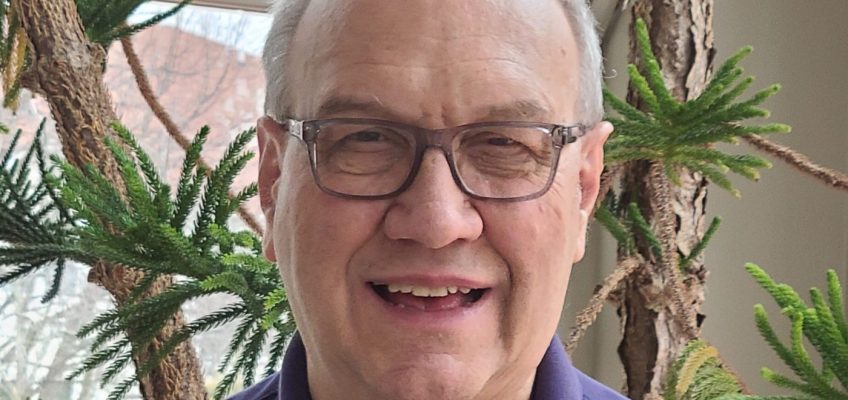Edward Lotterman
Donald Trump keeps flipping and flopping on tariffs. Many are scheduled to kick in on Aug. 1, but who knows. Nevertheless, U.S. households and businesses need to gird their loins for the biggest and fastest economic adjustments since the Japanese attack on Pearl Harbor brought us into World War II.
As things play out, we will make adjustments to what we buy, what we can sell, where we will work and now we will spend our free time.
How much will consumers cut their consumption of taxed imported goods? How much will we shift to substitutes or spend our money on unrelated alternatives?
How fast will domestic production of items hit with import taxes grow, as Trump suggests? And what about production ramping up in countries facing 10% U.S. tariffs when the historic dominant exporter faces 50% rates by the U.S.?
Economics offers us a tool to understand these issues — ones that will be critical over the next decade. It’s called “elasticities,” and it’s one of the fundamental concepts in economic analysis.
Elasticities explains and measures the degree to which changes in one variable affect another variable. Applied broadly they facilitate comparisons between different products, different eras, different countries and different currencies. The key is that they use objective percentage changes rather than subjective changes in quantity and value.
Start with an example of Mexican avocados facing high U.S. tariffs. Guacamole lovers like me wonder how much and how quickly U.S. production might increase. Not considering elasticities, ag economists might analyze historical data and conclude, “When avocado prices go up by 10 cents a pound, U.S. production increases by 232,000 crates per year.”
How does that compare to, say, Spain? “When the price there goes up by half a euro per kilo, output increases by 32,000 metric tons.” OK, what about fresh sweet corn? “Well, for every 25-cent increase per dozen ears, U.S. production goes up by 317,000 bushels.”
See the problem? How many avocados per crate or pounds of avocados? How many ears of corn per bushel? Using this approach, one must examine many years of data to get statistically valid conclusions. But doing that, we then would also have to consider that the overall buying power of a U.S. dollar has fallen by half since 1998 and that Europe now uses euros rather than francs, guilders and marks?
The solution is to ignore price and quantity units. Applying elasticities, we can pose all the changes in percentage terms. “When the price of avocados rises 10%, U.S. consumption falls by 4% … ”
You can apply that comparison to Spain or sweet corn or asparagus without getting into pounds, kilos, cases, bushels, dollars, euros or any other unit. You can analyze changes in price-quantity relationships in the 1960s when we ate a half pound of avocados per person annually and could get fresh sweet corn over a 60-day season. Now we eat nine pounds per person per year and can buy corn over at least 120 days. Forget quantity units. Ignore price changes. The percentage relationships alone give analytic power.
These “elasticities” can be used in all sorts of economic relationships. The common element is that we look at the percentage change in one variable relative to the percentage change in a related one.
Consider common examples:
• “By what percentage does U.S. consumption of avocados fall when their price increases by 15%?” That is an elasticity of demand, specifically their “own-price elasticity.”
• “By what percentage does U.S. consumption of corn chips fall when avocado prices increase by 15%?” That is an elasticity of demand, but a “cross-price” one where we look at the relationship between the price of one good and the consumption of a related good.
• By what percentage do consumer purchases of chunky tomato salsa rise when the price of avocadoes drops by 12%? That is also a “cross-price elasticity,” but one for products that are “substitutes” for each other. The prior example of chips and a key guacamole ingredient involve “complements,” or things that are consumed together. For consumers, salsa and guac compete with each other.
Then look at the producer side.
• By what percentage does U.S. production of avocados rise when import prices increase by 15%? That’s an elasticity of supply. The idea of related goods that are complements or substitutes similarly applies to supply and production as well as consumption.
• If the price of gasoline falls, what happens to production of paving asphalt? It increases because asphalt is a “complement in production” of refining crude oil into fuels. With lower prices, more gasoline is sold, more crude oil refined and more asphalt produced, even if the price of asphalt stays the same.
The common term for “complement” here would be “by-product.” When we had many integrated steel mills, higher steel output increased percentage production of Portland cement made from blast furnace slag even if cement prices had not changed a dime.
In Minnesota, despite predominance of corn and soybeans, oats and barley remain viable and are competing crops using near-identical inputs. They are “substitutes in production.” Oats is ideal for horses. When Canterbury Downs and hundreds of associated horses came in, the local price of oats rose compared to barley. Planted acres of oats increased slightly and barley fell.
In Manitoba, barley and canola are substitutes for farmers. Bad crops of corn and soy in the U.S. corn belt may reduce output of corn and soy oil, increasing prices. This may reduce next year’s sowing of barley in Manitoba. Farmers may plant more canola in the hopes of catching at least the tail end of the vegetable oil price increase.
Applications of elatsticies are almost endless and can be used to understand virtually all cause-and-effect relationships. Pollution: By what percentage would China’s emissions of carbon drop if the price of its coal increased 15%? Education: By what percentage do completed family sizes for Rwandan women fall for every 10% increase in the numbers of them who complete secondary school? Development: By what percentage does conversion of Brazil’s “campos cerrados” dry forests to farmland increase for every 5% increase in Chinese household incomes and thus of pork consumption?
Now let’s apply this to how the U.S. economy adjusts to Trump’s enormous tariff shock — regardless of whether it even shows up in actual price and quantity data.
The June Consumer Price Index showed an increase in the price of toys. Over time, how many fewer toys will parents buy? Will kids simply have to play with them longer? Will people buy more durable toys? Will trips to waterparks or minigolf outings make up for less lavish birthday bonanzas?
Furniture prices also went up. Will prices of used items at yard sales spike? Will skilled restorers have long waiting lists? With some women’s clothing also showing increases, will skilled tailors who can restyle and spiff up used dresses, tops and pants be able to raise rates without losing customers? Will charity shops see more buyers? Fewer donations? Both? Will someone seeking a master’s degree in consumer econ get funding from Goodwill for a thesis forecasting how used clothing donations and sales will respond to higher U.S. import tariffs?
Understand that nearly all elasticities vary with the length of time available for both producers and consumers to make adjustments. In the short run, it is hard for a coffee shop to change either menu or suppliers. Given more time, it can. Building a new brass foundry might take two years. In the meantime, industrial brass casting users will have to pay more for imports, eating some of the costs and passing some along.
So don’t believe assertions that tariffs will be a one-time price shock. Intertwined economic relationships are highly complex. Predicting details of how everything will fall out is nigh impossible.
Related Articles
Real World Economics: Trump’s chaos hurts his own cause – and all the rest of us
Real World Economics: Looming farm crisis, by the numbers
Real World Economics: Fed up? Delusions about the central bank continue
Real World Economics: Storm clouds gathering for a new farm crisis
Real World Economics: Bonds Part 2: How this affects us
St. Paul economist and writer Edward Lotterman can be reached at stpaul@edlotterman.com.




